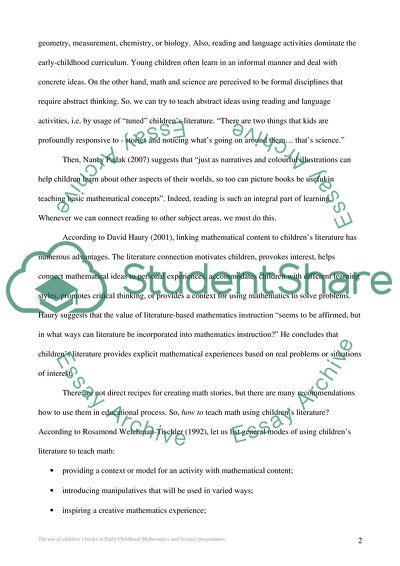Cite this document
(The Use of Childrens Books in Early Childhood Mathematics Assignment, n.d.)
The Use of Childrens Books in Early Childhood Mathematics Assignment. https://studentshare.org/education/1706905-the-use-of-childrens-books-in-early-childhood-mathematics-and-science-programmes
The Use of Childrens Books in Early Childhood Mathematics Assignment. https://studentshare.org/education/1706905-the-use-of-childrens-books-in-early-childhood-mathematics-and-science-programmes
(The Use of Childrens Books in Early Childhood Mathematics Assignment)
The Use of Childrens Books in Early Childhood Mathematics Assignment. https://studentshare.org/education/1706905-the-use-of-childrens-books-in-early-childhood-mathematics-and-science-programmes.
The Use of Childrens Books in Early Childhood Mathematics Assignment. https://studentshare.org/education/1706905-the-use-of-childrens-books-in-early-childhood-mathematics-and-science-programmes.
“The Use of Childrens Books in Early Childhood Mathematics Assignment”. https://studentshare.org/education/1706905-the-use-of-childrens-books-in-early-childhood-mathematics-and-science-programmes.


